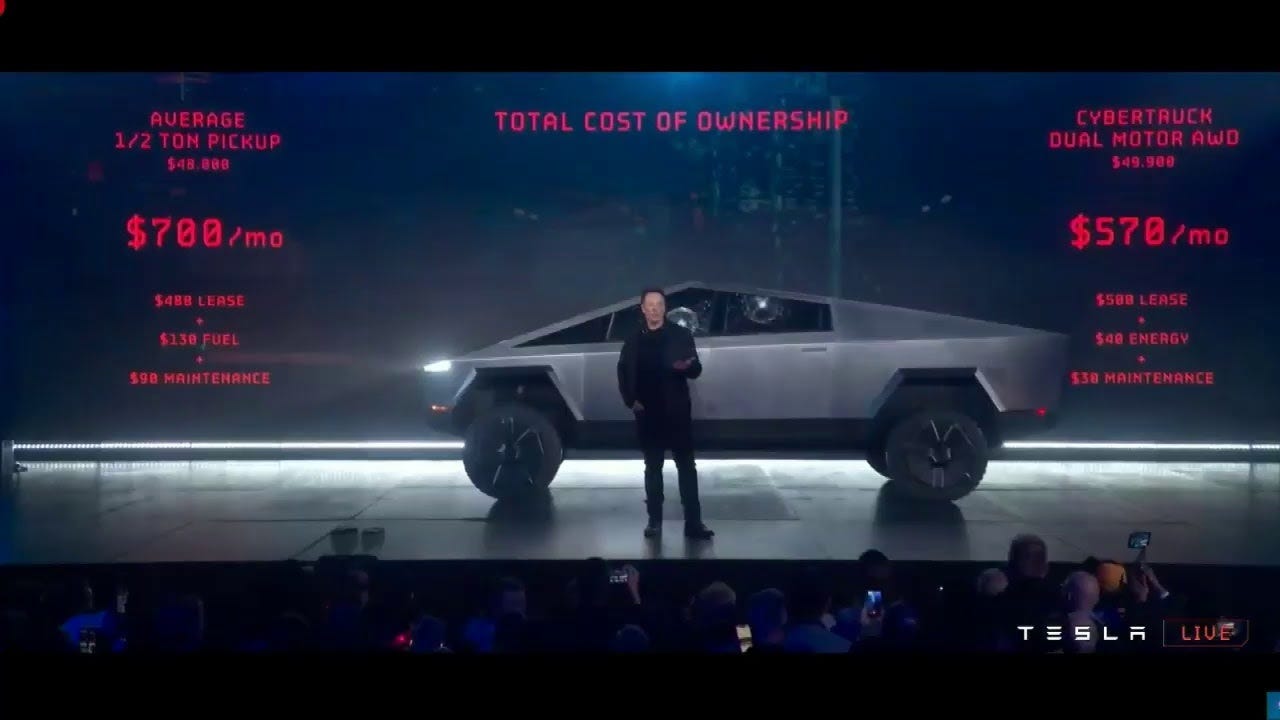Why is this interesting? - The Ad Economics Edition
On marketing, meaning, and what makes an ad an ad
Rick Webb (RLW) is a prolific writer, thinker, podcaster, and consumer of media. He’s also the only person I’ve ever met who thinks and speaks in bullet points. He previously contributed The Digital Advertising Edition. - Noah (NRB)
Rick here. If you’re a marketing person, one of the conversations you’ve surely found yourself a part of is what is advertising? Is it a subset of marketing or the superset? Is it narrowly defined as creative with media spend behind it or more broadly as all that communicates on behalf of a brand? Like many semantic arguments, everyone’s got an opinion, and they’re all boring.
But they’re not useless, particularly when those definitions seep into the science and research that underlies the discipline. The passing around of a recent article among friends on advertising and barriers to entry got us chatting about the various approaches to understanding the economics of advertising. Like the broader discipline, there are advertising economists focused on different types of questions—micro, macro, behavioral, theory of the firm—in an attempt to answer what’s happening with all those ads. Yet with advertising, there exist unique challenges around how to take the findings from one segment of the discipline and apply them more broadly. To illustrate this, let’s start with a simple question—one constantly debated within the industry—what is advertising?
Why is this interesting?
These days, most practitioners of the craft are sophisticated enough to realize that the only answer that works is a broad one that encompasses social media, television, Instagram, TikTok influencers, sports marketing, NASCAR, big product rollout keynotes, product placement in movies, and more. The old definition of advertising—creative amplified with media spend—doesn’t work when media spend is just one component of your marketing efforts, and not always the largest.
Yet many advertising economics studies, particularly older ones, take the more limited definition of advertising: creative amplified with media spend. Thus any findings they may discover about the nature of advertising—even empirically backed—are of limited use when thinking about advertising as a whole. It’s hard to claim you have untangled the way the world works when you’ve got your head in the sand.
The classic academic economist of yesteryear focused on the big picture thinking would be inclined to agree. Advertising’s always been something of a bugbear for classical economists. The issue is that it easily proves that perfect competition is a lie (since, if it existed, we would not need advertising). Most of the time, economists deal with issues of competition by pointing to externalities, the catch-all term for good and bad things that reality throws at economists’ models in an attempt to disprove them. The problem with that approach when it comes to advertising is that two hundred years in, they still can’t decide if advertising is a positive or negative one. Pollution? Obviously bad, thus a negative externality. Honeybees? They pollinate a farmer’s flowers, thereby saving money. And even though there aren’t many economic models with honeybees in them, it’s safe to assume they’re a positive externality. Advertising? No one’s really sure.
Most major economists have taken a crack at this enigma—from Janet Yellen to former MIT Sloan dean Richard Schmalensee. The parents of this discipline are Keynes’ best disciples, Edward Hastings Chamberlain and Joan Robinson. In a pair of near-simultaneous works, both came to the conclusion that expenditures spent to move product are best broken down into just two buckets; selling costs (1:1 efforts) and “trademark” costs (1:many efforts). Call it trademark, advertising, or marketing—to Chamberlain and Robinson, it was all the same.
This is a different approach than taken by, for example, economists who focus on the media—as in the ecosystem of publications and channels that create content for consumers. To a media economist, advertising is the money (or at least some of it) on which the industry functions, and therefore it would be natural for them to focus primarily on media spend, rather than the more extensive set of tactics encompassed in the Chamberlain/Robinson view. A student today, using a research paper by a media economist to draw conclusions about advertising as a whole, then, would be advised to use caution.
Other subspecies exist. You’ve got the industry-backed economists—such as industry darling Byron Sharp, or his forefathers Andrew Ehrenberg and John Philip Jones. Their work tends to be more useful for large brands, more focused on media spend, and less concerned about larger questions of advertising’s value to society.
Then we have the behavioralists, lead by the luminaries Amos Tversky, Daniel Kahneman, and Richard Thaler, who tend to be focused on individual decision-making. Yet the behavioralists, too, can often drift from their lanes, such as the work of Vicki G Morwitz in a series of studies across the ’90s and 2000s by starting with a 1993 paper provocatively titledDoes Measuring Intent Change Behavior? Turns out, the answer is yes. “The effect of merely asking intent to buy once is an increase in the subsequent purchase rate].” The effect is somewhat likened by the authors of the study to the Heisenberg Uncertainty Principle in physics.

The various branches of advertising economics make it challenging to read a single paper talking about “advertising” and its “impact” on something and draw a reliable conclusion from it. This is often true with econometric, empirical studies that can often be viewed as more trustworthy in other branches of economics. Going back to the article we passed around recently, it makes several points about advertising not being needed to launch a product, using companies such as AirBNB and Tesla as examples. Yet, with a more expansive definition of advertising, Elon Musk’s big Keynote galas and AirBNB’s phenomenal PR tactics would classify as advertising. Drawing a conclusion on barriers to entry while maintaining the narrow definition of advertising feels pretty disconnected from reality. (RW)
Hotel of the Day:

The Langham Hotel in London, one of my sentimental favorites, just reopened to guests. The hotel has a ton of interesting history: it first opened in 1865 as one of Europe’s first Grand Hotels and Louis Napoleon III spent much of his enforced exile from France at the hotel. During World War 2, according to the website: “it served as a local first-aid and military post during World War II. During the air attacks, the Luftwaffe dropped a high explosive bomb which hit one of the towers of the Langham, wrecking much of the West Wing. After the war, the BBC bought The Langham, London and leased sections of the hotel out as offices. "Grand Hotel," the iconic radio programme, featuring the soothing classical sounds of the Palm Court Orchestra, was also broadcast from there.”
It is nice to see these hotels, which are such incredible repositories of history, weathering Covid and re-opening to guests. One of my favorite things of the hotel are the doormen, the flowers in the lobby, and the Langham’s signature scent (notes of Ginger Flower, Green Grass, Rose, Lily of the Valley, Jasmine) which is present at all of their properties around the world. (CJN)
Quick Links:
Thanks for reading,
Noah (NRB) & Colin (CJN) & Rick (RLW)
—
Why is this interesting? is a daily email from Noah Brier & Colin Nagy (and friends!) about interesting things. If you’ve enjoyed this edition, please consider forwarding it to a friend. If you’re reading it for the first time, consider subscribing (it’s free!).



So glad my article gave you something to chat about and wonderful that you took time to share your perspective. Very helpful. I maintain there is a role in tighter definitions (or at least clear measures of different types) of the broader advertising to help marketers have the evidence to know what works best under what circumstances, e.g when do galas and PR work (for me help a brand grow)? are they interchangeable with mass media advertising? under what conditions? what makes these levers successful ? Making choices about where to invest (e.g. galas and/or social and/or tv) and how much in each is reality for the marketers I work with. Grouping them all together doesn't help with evidence-based decision making.